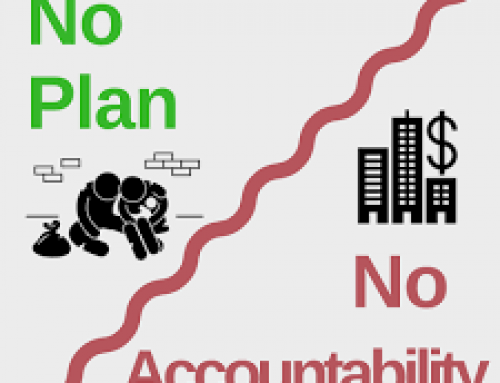November 3, 2014
By: Kelly Diamond, Publisher
 What happens when the federal government imposes expensive regulations and jacks up the minimum wage? Local governments and businesses can’t keep up.
What happens when the federal government imposes expensive regulations and jacks up the minimum wage? Local governments and businesses can’t keep up.
What’s the difference between a local government being overwhelmed with federal government impositions and a private business? The local government will kick the can down the road while the business simply finds a solution.
Commonwealth Issues
Massachusetts is touted as having the best healthcare system in the United States… at least on the political stage. What drives all this is that everyone is insured. Being insured only means that within the prescribed network of practitioners, you have a means of offsetting the cost of services rendered. It’s not a guarantee of timely or quality healthcare.
So nearly everyone is insured. But the lines are obnoxious! Many doctors aren’t accepting new patients. There is also a shortage of doctors… specifically primary care doctors. The doctor shortage has largely been overlooked in the discussion of healthcare. With such a fixation on getting people insured, the reality of doctor patient ratios was not realistically factored into the equation.
Here’s what also didn’t get taken into account: how many people would be punted over to Medicaid once the Affordable Care Act (a.k.a. Obamacare) rolled out. So in addition to suffering the same problems as the rest of the United States, with a limited amount of doctors, and an even more limited amount of doctors joining a government funded network, people aren’t actually getting timely care.
What’s more is the state isn’t keeping up with the bills incurred by such a large roster on Medicaid or “MassHealth”.
“The rolling Medicaid liability has expanded by 257 percent — from $140 million in fiscal 2011 to $500 million in fiscal 2014 — over the past four budget cycles, versus a 16-percent increase in total MassHealth spending over that same period.”
While measuring a line or a wait time is rather simple to do, it’s a little tricky to monitor the annual budgets of any given government, mainly because they aren’t designed to be understood much less consumed by the average citizen… on purpose.
In the case of Massachusetts, analysts have reviewed the financial information in Massachusetts and are left with only one conclusion: they are reporting current year expenses as next year’s, and paying for last year’s expenses this year. They are operating a year behind to show they are current. Okay, that works for a couple of years, but not if the spending outgrows its current levels by much. Still, Massachusetts has taken the Marie Antoinette approach to this issue, and is continuing to increase spending, with no plan on how to remedy the effects of the ACA or how to recover from the Great Recession.
While this can kicking will likely last the term(s) of the current governor and those holding office in the Commonwealth’s legislature, when it ultimately and inevitably reaches the cap of this maneuver, then what? What they are doing now can cover billions in unfunded liabilities before it crumbles.
“Should the state’s MassHealth cost deficits continue to grow, as they have repeatedly since fiscal 2011, the state will see more of its current-year budgets consumed by prior-year expenditures. It’s a scenario that analysts equate to robbing Peter to pay Paul, as the additional funds needed to pay for the state’s rolling Medicaid shortfalls will increasingly consume cash reserved for other state services in a given budget cycle.”
Cutting the spending comes at a price as the general welfare of a very dependent Commonwealth hangs in the balance. Between the 1.6 million insured and the long list of medical professionals who rely on these programs to stay in business, austerity is going to be a tough measure to sell.
“Indeed, the economic effects would be wide and deep should the state aggressively restrain spending growth or reduce budget shortfalls within MassHealth, a program that covers 1.6 million residents and accounts for significant revenue for virtually every health care provider in the state.”
Some ideas of team practices, abbreviating medical school by a year, and/or giving nurses more responsibilities have all been part of the larger discussion on how to bring down costs in a more humane way. But considering the doctor shortage has been a 30 year problem in the making nationwide, many nurses are already overworked as it is, and the state of Massachusetts has been “reworking” the books for five years with no sign of fiscal correction or solutions, I think reaching any level of solvency is a long shot.
But for the record, the private sector solutions are WAITING on the government to allow them to take foot. It’s up to each state to determine the scope of a nurse’s job. It’s up to each state licensing administration to determine the number of hours, credits, or years a medical student should attend school.
Canada is already having nursing and physician assistant staff supplant the doctor visits. People who are signing up to see a doctor are actually seeing the second or third in command to keep the costs down. Doctors are more and more being relegated to specialty and referral practices. People WANT to see a doctor, but they can’t afford that… so universal healthcare is basically becoming triage rather than care.
Business Solutions
On a completely different note, you have Lowe’s hardware stores who are rolling out a new line of customer service attendants. In anticipation for the hike and future hikes in the minimum wage, not only have many grocers turned to self-checkout machines, but it would seem large retailers are thinking about investing in robots who can help answer questions for the customers.
They have no hourly wage, just a flat cost per unit and some maintenance. They won’t ever get the isle number or price wrong. They will know what is or isn’t in stock. They won’t have a “bad day”; they will be as pleasant as you program them to be. No more sick days, I’m running late, I gotta pick up my kid, my car broke down… No more workers’ compensation or health insurance.
It would seem several birds can be potentially killed with this one particular stone! At some point, these class warriors who are politicizing economics will come to understand that employers don’t pay you to live. They pay you to work, and if you won’t work for the wage you are worth, then you have one of two problems: either a shortage of employees OR the cost of employees is too high to maintain a healthy profit margin.
“A recent study by the University of Oxford concluded that as much as half the U.S. workforce is at risk of being replaced by mobile robots and ‘smart’ computers within the next two decades.”
I’m always impressed at how the private sector manages to field many of the government curveballs thrown at them. Not ALL, but a good many to make their batting average pretty awesome! How has the private sector handled Obamacare? Keeping hours low, employment low, and leaning heavily on temp agencies.
How have local governments handled the same regulations? Sloppily and unsustainably. While businesses face closing their doors, governments don’t. While Walmart is perceived as just pure evil, government will always be the NECESSARY evil… which is its lifeline. Bankruptcy is a reality in private business, but it’s not something you often see in the public sector.
There is no righting this course. As a final thought, I leave you with this from Simon Black of Sovereign Man who suggested the US National debt be measured in work years:
(Work years: number of years to pay off the debt if every American man, woman, and child worked a job paying the average national salary, and 100% of everyone’s earnings was used to pay down the national debt.)
“The Social Security Administration just released data for the average yearly salary in the US in fiscal year that just ended. It stands at $44,888.16.
“The current debt level of over $17.9 trillion would thus take more than 398 million years of working at the average wage to pay off.
“This means that even if every man, woman and child in the United States would work for one year just to help pay off the debt the government has piled on in their name, it still wouldn’t be enough.
“Mind you that this means contributing everything you earn, without taking anything for your basic needs—which equates to slavery.”
Chew on that!




